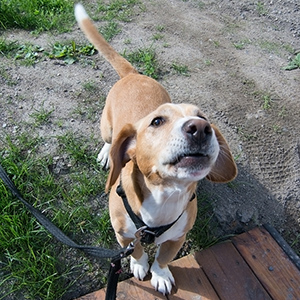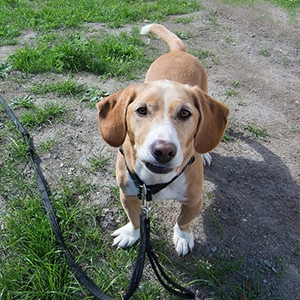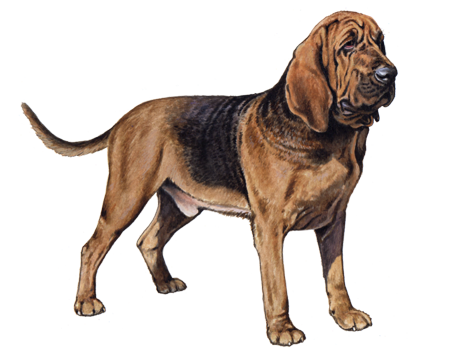
Drever
The Drever is the total package. This breed has the tenacity of a hunting dog and the disposition of a calm, friendly companion. Though they have a tendency to bark, Drevers are social animals and tend to get along with other dogs.
Interested in discovering if your dog is a Drever?
Check out Wisdom Panel's DNA tests.

Drever Traits
General Appearance
The short-statured, agile Drever has a long, sturdy body and well-developed muscles.
Coat and Colouring
Drevers have short, coarse hair that comes in a variety of colors—including tri-color, red and white, and fawn and white.
Distinctive Physical Traits
With a long, low body and short legs, the Drever is muscular and agile—ready to take on any hunting challenge.
Drever Temperament
Highly skilled hunters, Drevers also make great family dogs when properly trained. They typically have an alert disposition and a strong love for their people.
Like most hunting dogs, the Drever can sometimes be stubborn. Starting training early can help temper this independent streak. Overall, Drevers are even-tempered and don't tend to be overly aggressive or shy.

Drever History
The Drever descended from the Westphalian Dachsbracke—a German hound imported to Sweden around 1910. Short legs made these dogs excellent deer trackers (since their noses were close to the ground). And by 1947, the larger, Swedish variety of the Dachsbracke earned the name Drever.
After officially becoming a Swedish breed in 1953, the Drever gained recognition for its skill at hunting deer—as well as smaller prey, such as foxes and hares. Today, these dogs typically serve as hunting partners rather than family pets. But with the proper training, they can certainly be both.
Drever Care
Nutrition
It's important to feed your Drever a high-quality dog food suited to their particular age and activity level—as well as any additional health concerns.
Drevers are prone to gaining excess weight as they age. To prevent this, monitor how much your dog eats and reduce portions if necessary. Your veterinarian can also advise on appropriate nutrition and feeding guidelines.
Grooming
Drevers are relatively low-maintenance—especially when it comes to grooming. Though their coarse hair does shed, a weekly brushing session and the occasional bath is all they need to stay looking good.
Trimming nails, cleaning ears, and brushing teeth should also be part of every dog's grooming routine, regardless of breed.
Exercise
Though Drevers may differ from traditional hunting dogs in terms of size, they certainly compare in stamina. An active and energetic breed, the Drever requires stimulating activity and exercise every day to stay healthy and happy.
These dogs love spending time with their people. So, group activities—such as walking and hiking—are good options. Drevers also seem to enjoy canine sports, such as rally, agility and lure coursing.
Training
Drevers have a stubborn streak that can make them difficult to train. But since their strong prey drive can get the best of them, proper training from an early age is essential.
For the best results, use reward-based training techniques. And remember, all dogs need socialization to become safe, well-adjusted companions. (This is especially true for hunting breeds.)
Drever Genetic Health Conditions
-
Chondrodystrophy (CDDY) and Intervertebral Disc Disease (IVDD) Risk
Chondrodystrophy (CDDY) is a skeletal disorder characterized by shortened limbs and abnormal early degeneration of the spinal discs, or intervertebral disc disease (IVDD), which predisposes to disc herniation.
Knowing if your Drever is a carrier or at-risk for these conditions can help you and your veterinarian plan for your pup's lifelong care. With Wisdom Panel™ Premium, you can get results for over 200 genetic health tests.
Breed Group
Hound
The most common ancestral trait of this group is being used for hunting. Some use acute powers of scent to follow a trail while others demonstrate the gift of stamina as they run down a quarry. Beyond these two common traits, however, generalizations about hounds are hard to come by as the group is comprised of a very diverse lot of breeds.
Resources
https://www.akc.org/dog-breeds/drever/
http://www.fci.be/Nomenclature/Standards/130g06-en.pdf
Reviewed 26 July 2020 by Laura Inman, DVM












































